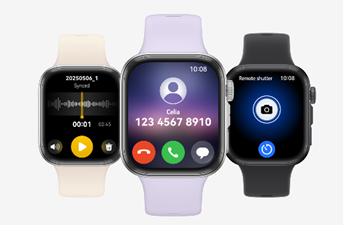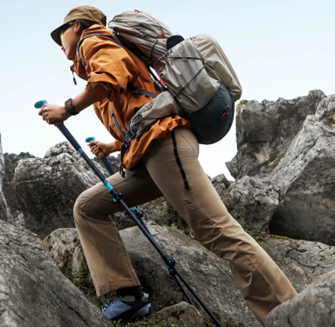Your smartwatch's barometer is quietly gathering valuable data that most users completely ignore. This unassuming sensor measures atmospheric pressure changes that affect everything from weather patterns to your joint pain. Unlike your phone's weather app that shows general forecasts, your watch provides hyper-local pressure readings that can predict rain before the first drop falls, help optimize your sleep position, and even explain why you feel sluggish on certain days. In this article, we'll reveal eight practical ways to harness this underutilized feature to improve your daily life.

Personal Weather Forecaster: Detect Storms Before Your Phone
How pressure drops warn you 2-3 hours before rain
Your smartwatch can become your personal meteorologist by detecting pressure changes that precede weather shifts. When atmospheric pressure drops steadily by more than 1 hPa per hour, rain is likely within 2-3 hours. One gardener sets his watch to alert him when pressure falls below 1010 hPa, giving him time to cover delicate plants. A sailing enthusiast uses this feature to decide when to return to harbor, as pressure drops often signal approaching storms. The key is watching the trend rather than absolute numbers - a rapid 5 hPa decrease is more significant than a slow 10 hPa change over a day.
Setting alerts for sudden weather changes
Most smartwatches allow you to set custom pressure change alerts. Try creating two alerts: one for pressure dropping more than 2 hPa/hour (possible rain coming), and another for rising pressure (indicating clearing weather). A school teacher uses these alerts to plan outdoor recess times, while a photographer schedules shoots during stable high-pressure periods for optimal lighting. For best results, combine pressure data with humidity readings if your watch provides them, as the two metrics together give more accurate weather predictions than either alone.
Sleep Optimizer: Why Your Pillow's Elevation Matters
Tracking nighttime pressure changes for better sleep
Many people sleep poorly during pressure fluctuations without realizing the connection. Your smartwatch can track how different pressure conditions affect your sleep quality. One user discovered she consistently woke up when pressure dropped more than 3 hPa overnight, prompting her to use white noise during stormy weather. Others find they sleep deeper during stable high-pressure periods. Try noting your sleep scores alongside pressure graphs for several weeks to identify your personal patterns. Some watches even suggest optimal pillow heights based on pressure-related sleep disturbances.
Ideal bedroom pressure ranges revealed
While you can't control outdoor pressure, you can optimize your bedroom environment. Studies suggest most people sleep best when indoor pressure remains between 980-1020 hPa. Use your watch to monitor nighttime pressure, and consider using humidifiers or air purifiers to stabilize conditions. One asthma sufferer found running an air filter during low-pressure nights reduced his breathing issues. If your bedroom is at a different elevation than where you spend your days (like a high-rise apartment), your watch's altimeter can help you adjust gradually to the pressure change before sleep.
Travel Companion
Your smartwatch's barometer becomes invaluable when traveling. The altimeter helps combat jet lag by tracking elevation changes during flights - one frequent flyer uses it to time melatonin doses based on cabin pressure changes. Hikers can prevent altitude sickness by watching elevation gain - a good rule is ascending no more than 300 meters daily above 2500 meters. The pressure sensor also helps calibrate other features - one traveler in a high-altitude city noticed his step counter was inaccurate until he manually adjusted for elevation. Some watches even use pressure changes to detect when you're on an airplane versus train, automatically switching travel modes.

Mood & Productivity Tracker
Atmospheric pressure significantly affects energy levels and cognitive performance. Many people report feeling lethargic during low-pressure systems and more energetic when pressure rises. Track your productivity against pressure trends for a month - you might discover you do your best creative work above 1015 hPa, while analytical tasks flow better during stable pressure. One writer schedules brainstorming sessions for high-pressure days and editing for lower-pressure periods. Teachers can use this data to plan lesson difficulty - several educators report students concentrate better when pressure is rising or stable. While you can't control the weather, understanding these patterns helps you work with your body's natural rhythms.
Conclusion
Your smartwatch's barometer offers far more utility than most users realize. For comprehensive environmental tracking, devices like the Huawei Watch Fit 4 provide detailed altitude and pressure data with specialized modes for various activities. By understanding pressure patterns, you can predict weather changes, optimize sleep, adjust workouts, and even improve productivity. One user described it as "having a sixth sense for environmental changes." Start exploring your watch's pressure features today - you'll begin noticing connections between atmospheric conditions and your wellbeing that were invisible before. With these eight hacks, you'll transform from a passive observer to an active interpreter of your environment.